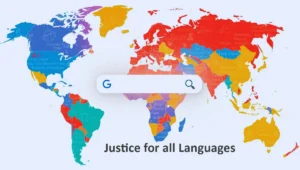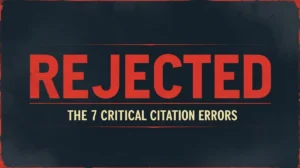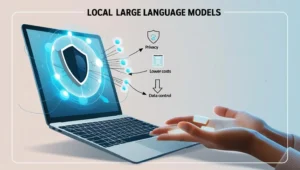For years, researchers have relied on traditional keyword-based search engines to access knowledge. With the advent of Large Language Models (LLMs), the method of information acquisition is rapidly shifting toward AI-driven search. These models possess a remarkable ability to summarize, analyze, and answer complex questions. However, the use of raw LLMs in the academic realm faces a critical and fundamental challenge: Hallucination.
Hallucination refers to the generation of factually incorrect information, fabricated citations, or the invention of data not present in the model’s training dataset. In a domain where accuracy, citation, and credibility are paramount, this phenomenon is not just a technical glitch but a crisis of trust. Furthermore, the knowledge of these models is limited by their training data cutoff time, making them practically unsuitable for cutting-edge research in the dynamic world of science and technology.
This article explores the Retrieval-Augmented Generation (RAG) architecture—a foundational solution that combines the text generation power of LLMs with the accuracy and reliability of verified scientific databases, ensuring that the AI output is completely Factually Grounded and fully citable.
The Knowledge Gap and Hidden Costs: Why Traditional LLMs Fall Short for Researchers
LLMs are trained for general purposes and rely on a statistical principle to predict the next word in a sequence. This creates two serious problems in research that directly relate to critical blog topics such as bias and credibility:
A. Lack of Source Transparency and Data Governance
When using a raw model to answer a specialized question, the exact origin of the information is unknown. This ambiguity eliminates the possibility of Citation Verification and violates the most fundamental principle of research. Given the importance of data governance in research (especially in sensitive fields like health or finance), researchers require precise traceability to confirm the validity of data, methodology, and its fit with their query. This lack of accountability can lead to problems highlighted in our posts on Algorithmic Bias and challenges to Research Credibility.
B. Domain Knowledge Gap and Economic Inefficiency
LLMs are never trained on the complete, proprietary corpus of articles within a specific domain (e.g., an internal legal database or a vast repository of material science papers). The traditional method for adapting a general model to a niche field is Fine-Tuning, which involves retraining the model on new datasets. This process is incredibly expensive, time-consuming, and computationally intensive, and must be repeated with every major update to the scientific literature. RAG, in contrast, eliminates the need for costly Fine-Tuning for knowledge updates, offering a scalable and cost-efficient solution for accessing proprietary and up-to-date domain expertise.
II. What is RAG? The Bridge Between Language Power and Data Integrity
Retrieval-Augmented Generation (RAG) is an AI framework that couples an LLM with an external, up-to-date, and authoritative knowledge base. Introduced by Meta AI in 2020, this process incorporates three key stages to inject accuracy and citability into LLMs:
1. The Indexing & Embedding Phase
- Chunking: All proprietary academic sources (papers, reports, books) are broken down into small, manageable sections (chunks).
- Embedding: These texts are converted into numerical vectors using Embedding Models and stored in a Vector Database. These vectors represent the precise meaning and context of the scientific content in a multi-dimensional mathematical space.
2. The Retrieval Phase
- When a researcher asks a question (for example: “Can AI in Healthcare improve the diagnosis of rare diseases?”), The RAG system first converts the question into a semantic vector.
- It then searches the vector database using similarity algorithms to retrieve the most relevant text chunks from the scientific sources. This stage acts like “opening the book” and finding the precise, relevant paragraph.
3. The Generation Phase
- Instead of sending the raw query directly to the LLM, the RAG system constructs an Augmented Prompt. This prompt contains two essential elements: the researcher’s original question and the retrieved texts from the authoritative sources.
- The LLM then generates the final response, but with a crucial difference: the model is now constrained to produce its answer only based on the provided, verified texts (the retrieved chunks). This process is known as “Grounding” the response.
III. RAG’s Role in Ensuring Academic Credibility and Data Governance
RAG directly targets the key challenges in the academic space, profoundly impacting the quality of AI output:
| Key RAG Advantage | Impact in the Academic Sector | Importance for the Researcher |
|---|---|---|
| Grounded Response | Maximal Reduction of Hallucination: Ensures the LLM output is based on verified scientific facts. | The validity and veracity of research results are guaranteed. |
| Recency & Specificity | Access to New Knowledge: Allows for real-time database updates without costly model re-training. | The researcher has access to the latest published articles. |
| Traceability & Auditing | Full Transparency and Source Referencing: The system can directly cite the sources used to generate the answer. |
Enables verification and Auditing of the answer's generation path. Export to Sheets |
IV. The Path Forward: From Simple RAG to Agentic Systems
Despite its significant advantages, RAG is still in its early evolutionary stages. Researchers are working on Advanced RAG techniques to improve retrieval quality and reasoning:Retrieval Enhancement:
- Query Rewriting: Intermediate models rephrase the user’s initial query before the search takes place, increasing the semantic relevance of the search with the documents and preventing shallow keyword matching.
- Re-ranking: A smaller model (the Reranker) re-evaluates the initially retrieved chunks for quality and academic relevance, sending only the absolute best results for final response generation.
Complex Reasoning with Multi-Hop RAG:
- For complex questions that require combining information from several distinct documents (e.g., “Does compound X affect gene Y, and is gene Y associated with disease Z?”), the RAG system must perform a Multi-Hop search, using the results of prior searches as input for the next retrieval step.
RAG Agents:
The next generation where the LLM becomes an Agent and autonomously decides when, how, and with what tools (like code analysis, plotting, or database querying) to produce the answer. The agent will consult its knowledge base via RAG only when necessary, otherwise leveraging its internal reasoning capabilities. This approach unlocks the ultimate potential of LLMs in research.Conclusion
RAG is no longer an optional concept; it is a fundamental necessity for the successful implementation of AI in research, specialized, and enterprise domains. This architecture is the essential bridge between the extraordinary capabilities of Large Language Models and the strict requirements of scientific accuracy and citation. As RAG evolves, we will witness the emergence of academic search engines that are not only capable of summarization but also guarantee that the knowledge provided is fully documented, up-to-date, and free from algorithmic hallucinations. This step marks a major leap forward in reinforcing the credibility of research findings and empowering the next generation of scholars. References- Lewis, P., et al. (2020). Retrieval-Augmented Generation for Knowledge-Intensive NLP Tasks. Neural Information Processing Systems (NeurIPS) 2020.
- IBM Research. (2023). What is retrieval-augmented generation (RAG)? Available at:https://research.ibm.com/blog/retrieval-augmented-generation-RAG
- Google Cloud. (2024). What is Retrieval-Augmented Generation (RAG)? Available at: https://cloud.google.com/use-cases/retrieval-augmented-generation
- Zhao, S., et al. (2024). Retrieval Augmented Generation (RAG) and Beyond: A Comprehensive Survey on How to Make your LLMs use External Data More Wisely. arXiv preprint arXiv:2409.14924.
- Poudel, B. (2024). Building a Retrieval-Augmented Generation (RAG) System for Academic Papers. Medium.






